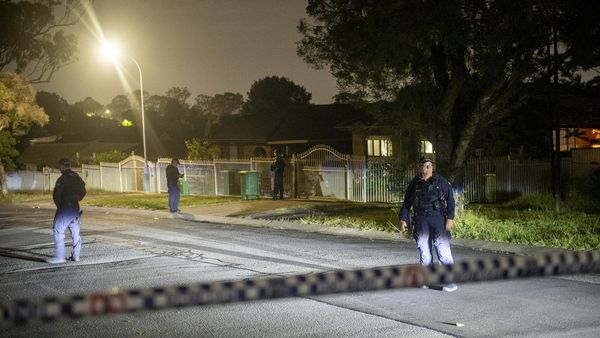
It appears that the UK government is going to ban “no-fault” evictions by private landlords in England. It promised to abolish these notices immediately after the election, and the king’s speech in July indicated this was a priority.
Of course, this is not the first time this reform has been promised. It was a manifesto commitment for the Conservatives and prime minister Boris Johnson in 2019. But progress was slow, with arguments about the overburdened court system and the length of time it was taking to process repossession cases used to put the change on hold.
Then, just before the 2024 general election was called, a compromise was reached with landlords requiring the lord chancellor to assess the readiness of the court system before a new law could be brought into force. This would have delayed the implementation of the reform, potentially indefinitely.

For the new government, the promised reform of section 21 of the Housing Act 1988, which introduced no-fault evictions, is key to providing stability and security for 11 million private renters, essential for reducing homelessness, and is part of its strategy for improving housing quality.
It is hoped that private renters, free of the fear of being evicted, are more likely to raise issues around disrepair and damp, and challenge other poor landlord practices. The hope is that this will be more successful than previous attempts in combating “retaliatory evictions” (where tenants are evicted as revenge for asking for repairs or complaining about conditions).
But how successful this is in improving housing conditions in the private rented sector will depend – at least in part – on how secure tenants feel following the change.
For their part, many landlords argue that ending no-fault evictions will reduce supply, as increased regulation will lead more of them to quit the market.
This claim needs to be taken seriously, as any reduction in supply would be problematic. However research indicates that previous regulatory changes did little to make landlords sell their properties, while changes in tax rules and borrowing costs have a greater influence. And experience from Scotland, where no-fault evictions were abolished by the Private Housing (Tenancies) (Scotland) Act 2016, bears this out.
Other concerns
But there are a host of other problems for renters that would not be resolved by abolishing no-fault evictions. In fact some of them could be made worse.
First, tenants evicted on legal grounds such as arrears, damage or causing a nuisance are much more likely to be deemed to be intentionally homeless than those who are evicted on no-fault grounds. This means they are less likely to be offered housing (although it should not be an automatic assumption that rent arrears arose deliberately).
This may relieve the pressure on local authorities faced with huge demand for temporary accommodation. But it will have serious consequences for those in the private-rental market, such as low-income households, who are more appropriately housed by the local authority. If they’re deemed to be intentionally homeless, the end of no-fault evictions could make it far harder for these renters to move into social housing.
Second, the existence of no-fault evictions has meant that little attention has been paid to the difference between being a tenant and (what the law describes as) a licensee. A tenant has rights under property law and therefore more protections over things like eviction and repairs, while a licensee has only the owner’s permission to be living in the property.
In the absence of section 21, landlords may seek to pass off tenancy agreements as licences, leaving renters with fewer protections than they imagine. Or a landlord could claim to be a resident landlord and that the occupier is a lodger, and therefore excluded from protection.
For this reason, and because illegal eviction (or harassing a tenant until they leave) may become more attractive to landlords frustrated by slow legal eviction procedures, we believe that reform of outdated and complex illegal eviction legislation is critical.
Experience from the era of the Rent Act 1977, before the days of section 21, would also suggest that possession cases will be argued in fine detail in court. That may be manageable for tenants who can afford lawyers or are able to represent themselves well, but for many tenants it will be very daunting to stand up in court and make their case.
In addition, unlike in the 1980s when there was generous legal aid to defend evictions, there is now no legal representation available in vast areas of the country where there is no one with the appropriate expertise to advise tenants.
Finally, the issue of affordability of rental properties continues to be an issue. The government has promised to enhance the limited opportunities for tenants to challenge rent increases, and to prevent bidding wars. But there is no proposal to limit rents.
As long as a free market is coupled with under-supply of rental properties, private renting will continue to be unaffordable for many. And landlords will find it relatively easy to legally evict where there are rent arrears.
If there are large numbers of evictions using accusations of rent arrears, it doesn’t mean that those tenants are feckless. It is much more likely that the number of evictions demonstrates the extraordinary and widespread unaffordability of rental housing. That will in turn produce pressure for the introduction of rent controls.
Given all of this, it does not seem likely that reform of no-fault eviction laws will tranform the UK’s private rental landscape. Growing calls to introduce restrictions on rent will make the controversies about the abolition of section 21 seem trivial in comparison.
Edward Kirton-Darling and Helen Carr received funding from Shelter as part of the team who researched and wrote the Closing the Gaps report which is linked in the article
Helen Carr does not work for, consult, own shares in or receive funding from any company or organisation that would benefit from this article, and has disclosed no relevant affiliations beyond their academic appointment.
This article was originally published on The Conversation. Read the original article.







